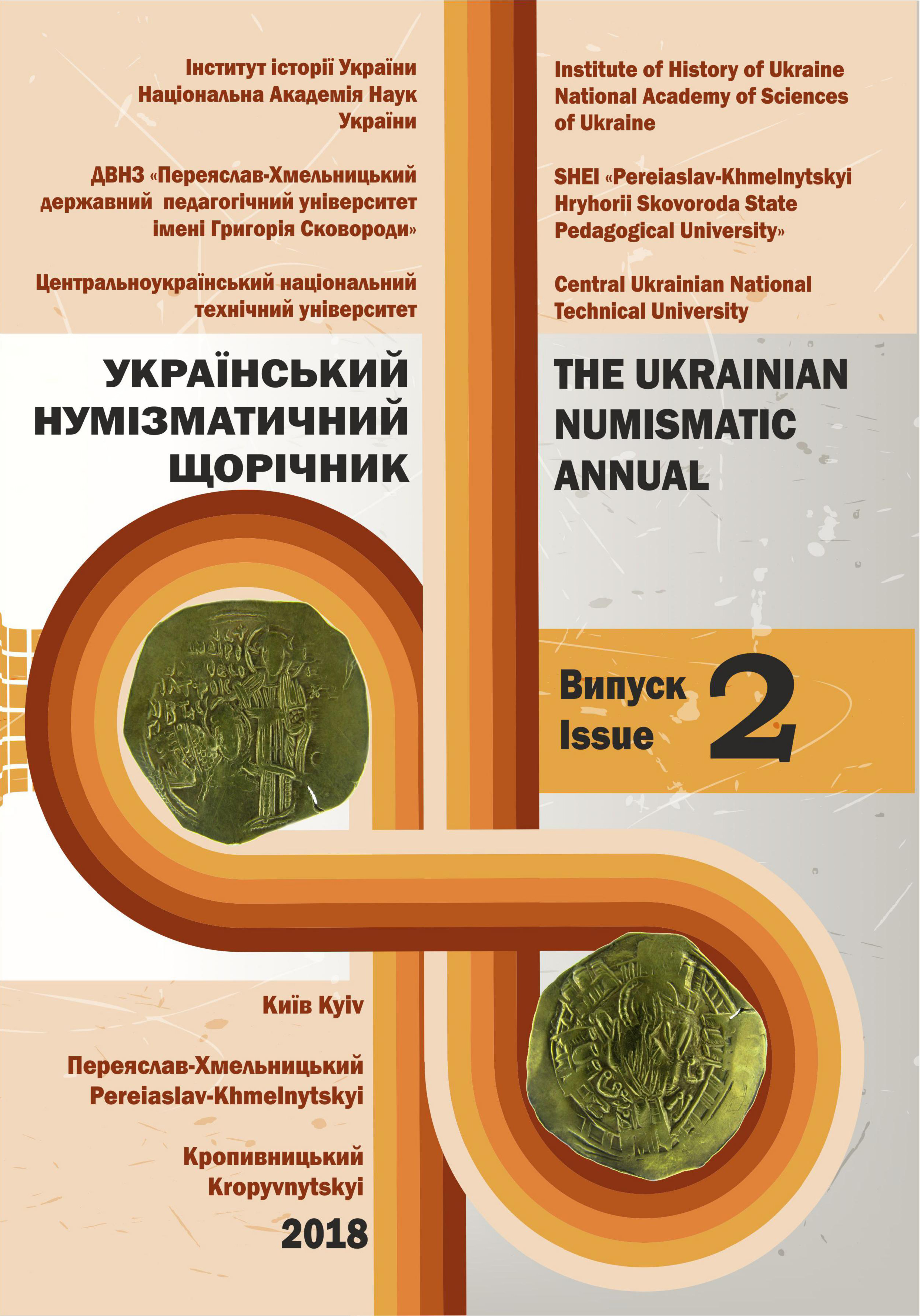ПРО ЗНАХІДКУ ПАНТІКАПЕЙСЬКОГО ОБОЛУ НА РАННЬОСЕРЕДНЬОВІЧНОМУШЕСТОВИЦЬКОМУ ГОРОДИЩІ
ON THE FINDING OF THE PANTIKAPAION OBOL ON THE EARLY MEDIEVAL HILLFORT OF SHESTOVYTSYA
Author(s): Kyrylo V. Myzgin, Yurii Sytyi, Stepan StepanenkoSubject(s): Archaeology, Cultural history, Economic history, Ancient World, Special Historiographies:
Published by: ДВНЗ Переяслав-Хмельницький державний педагогічний університет імені Григорія Сковороди
Keywords: Shestovytsya hill fort; Early Medieval Period;Pantikapaion obol; Milograd Culture; Early Iron Age;
Summary/Abstract: In the summer of 2012, a copper coin was unearthed during archaeological excavations at the Sestovytsyasite, in the Chernihiv region, Ukraine. It is identified in this article as a Panticapaeanobol, issued during the reign of the Bosporianking PerisadII, between 275 and 245 BC (Anokhintype 133). The coin is 20 mm indiameter and weighs 6.1 g. Such coins, which are fairly monotonous in their typology and style, were the first mass issue, pure copper coins from Bosporus during the financial crisis of the third century BC.The Shestovytsya hill fort, were obol was found, is located in north-eastern Ukraine, 18 kilometers downstream on the river Desna from the city of Chernihiv, 1 km to the south of the modern village of Shestovytsya. One of the earliest finds from the hill fort is an early Iron Age ceramic vessel (Milograd culture;9th /early 8th – 3rd / 2nd centuries BC). The Slavic period is represented by Volyntsevo culture finds, dated to the second half of 7thand first half of 8thcenturies. The medieval settlement begins its existence between the late 9th and early 10th centuries. The settlement is thought to continue its existence into the early decades of the 11th century, when it is largely abandoned. In the 12th century it reappears as apossible stopover pointalong the Chernihiv-Kyiv road.Bosporiancoin discovered during excavations of trench 27 (trench supervisor V. Zhigola), as a result ofre-examination of the spoil using a metal detector. Trench 27 was located on the north‐eastern section of a suggested rampart which encircled the hill fort. Finds of ancient Greek coins, including those from the ancient Greek states of the Northern Black Sea region, are not out of the ordinary in the steppes and forest-steppes of Eastern Europe. Only 45 Panticapaean coins, from 17 sites, including the coin from Shestovytsya, are known in Eastern Europe, outside the Bosporuskingdom. Most of them (55.5%) were found in the Lower Dnieper region, issued predominantly in the years314-275 BC (Anokhintypes 111, 112, 125 and 130). It is highly likely that the Panticapaean coin from Shestovytsya arrived there in the 3rd century BC,during the Milograd culture stage of the site. Subsequently, the coin was displaced and found its way into the early medieval layers, whether through the 10th and then the 12th centuries, or directly in the 12th. An alternative hypothesis is that the coin could have been taken as a souvenir during one of the trade and military campaigns of local warrior/traders to the territory of the Northern Black Sea Coast.
Journal: Український Нумізматичний Щорічник
- Issue Year: 2018
- Issue No: 2
- Page Range: 15-26
- Page Count: 12
- Language: Ukrainian

